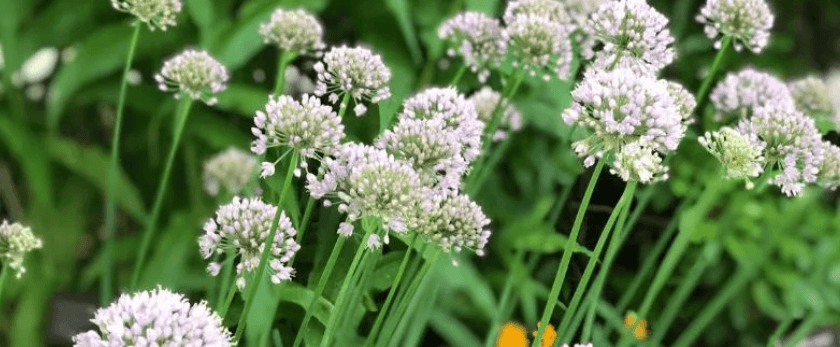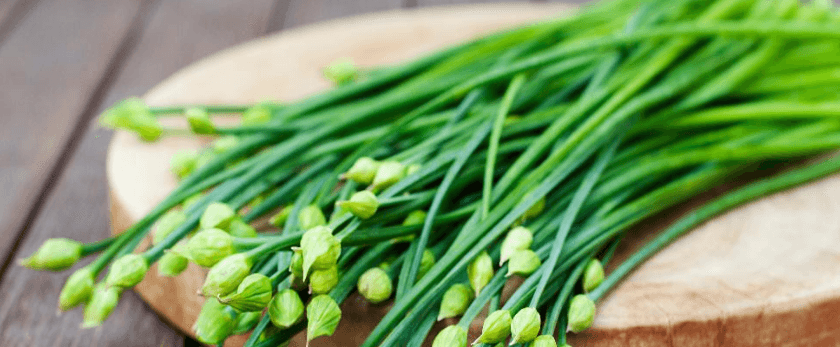Garlic chives, also known as Chinese chives or Allium tuberosum, are a versatile and flavorful herb that can be easily grown in your own backyard. Not only do they add a delicious kick to your dishes, but they also have numerous health benefits and are a great addition to any sustainable garden. In this article, we will discuss how to care for garlic chives, the best time to grow them, and common problems you may encounter. So let's get started!
How to Care for Garlic Chives
Watering
Garlic chives prefer consistently moist soil, but not waterlogged. It is important to water them regularly, especially during hot and dry weather. However, be careful not to overwater as this can lead to root rot. A good rule of thumb is to water deeply once a week, allowing the top inch of soil to dry out between waterings.
Light
Garlic chives thrive in full sun to partial shade. They require at least 6 hours of sunlight per day, but too much direct sunlight can cause the leaves to wilt. If you live in a hot climate, it is best to provide some shade during the hottest part of the day.
Soil
Garlic chives prefer well-draining, fertile soil with a pH level between 6.0 and 7.0. If your soil is too acidic, you can add some lime to raise the pH level. If it is too alkaline, you can add some sulfur to lower the pH level. It is also a good idea to add some compost or organic matter to the soil before planting to provide essential nutrients.
Fertilizer
Garlic chives do not require much fertilizer, but a light application of a balanced fertilizer in the spring can help promote growth. Avoid using chemical fertilizers and opt for organic options instead. You can also use compost or worm castings as a natural fertilizer.
Pruning
Pruning is an important part of caring for garlic chives. Regularly harvesting the leaves will encourage new growth and prevent the plant from becoming too woody. You can cut the leaves at the base of the plant, leaving about an inch of stem. This will also prevent the plant from flowering, which can make the leaves bitter.

What is the Best Time to Grow Garlic Chives?
Garlic chives can be grown year-round in mild climates, but they are best planted in the spring or fall. In colder climates, it is best to plant them in the spring after the last frost. They can also be grown indoors in a sunny window during the winter months.
Common Problems with Garlic Chives
Pests
Garlic chives are generally pest-resistant, but they can occasionally be affected by aphids, thrips, and onion maggots. To prevent these pests, keep your garden clean and free of debris, and regularly inspect your plants for any signs of infestation. You can also use natural pest control methods such as neem oil or insecticidal soap.
Diseases
The most common disease that affects garlic chives is root rot, which is caused by overwatering or poorly draining soil. To prevent this, make sure to water your plants properly and provide good drainage. If you notice any signs of root rot, such as wilting leaves or a foul odor, remove the affected plant immediately to prevent it from spreading to other plants.
Bolting
Bolting is when the plant produces a flower stalk, which can make the leaves bitter and tough. To prevent this, regularly harvest the leaves and keep the plant well-watered. If your plant does bolt, you can still use the leaves, but they may not be as flavorful.
Sustainable Gardening Tips
Growing garlic chives is not only beneficial for your taste buds, but it is also great for the environment. Here are some tips to make your garlic chive garden even more sustainable:
- Use organic and natural fertilizers instead of chemical ones.
- Compost your kitchen scraps and use it as a natural fertilizer for your plants.
- Use rainwater to water your plants instead of tap water.
- Plant native plants and flowers to attract pollinators and beneficial insects.
- Avoid using pesticides and opt for natural pest control methods.
- Practice crop rotation to prevent soil depletion and pest infestations.
- Use mulch to retain moisture in the soil and suppress weeds.
- Save seeds from your garlic chives to plant in the future.
Conclusion
Growing garlic chives is a simple and rewarding experience that can add flavor to your dishes and contribute to a more sustainable lifestyle. By following these tips and caring for your plants properly, you can enjoy a bountiful harvest of delicious and nutritious garlic chives. Remember to always be mindful of the environment and use sustainable gardening practices to create a greener and healthier planet for future generations. Happy gardening!










